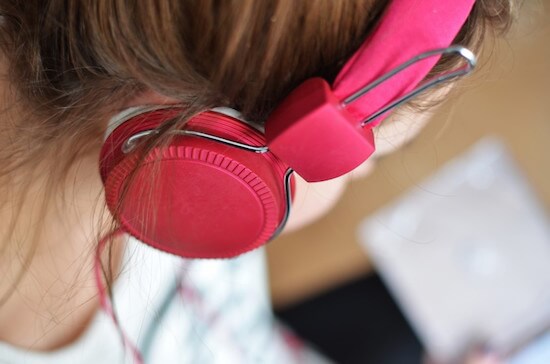In a day and age where kids grow up surrounded by technology, they will most likely enjoy using phones, iPods, and other devices to listen to music or watch videos. When they are doing so, they are most likely plugged in to their device through a pair of earphones in their ears. As we’ll see in the video link below, ears take in even more information than eyes do, so it is important to take care of them by making sure your child knows how to safely listen to music. Read on to learn more about kid’s health and how to prevent your child from damaging their ears.

How loud is too loud?
Worksafe BC created “The Hearing Video”, which is a great resource to learn more about the importance of protecting hearing for your kid’s health. To summarize, hair cells, also known as cilia, send sound information to the brain. When the ear is exposed to very loud sounds, the cilia become damaged.
Even if the ear is exposed to moderate sound levels for a long period of time, damage can occur. You may be surprised at how long it takes for a sound level to become hazardous. According to the Canadian Academy of Audiology, max volumes per day include 8 hours of busy street traffic, 2 hours of a hair dryer, 15 minutes of a school dance, and less than 30 seconds of an mp3 player at peak volume. So, it’s not just about how loud your kid’s music is, but how long they’re listening to it!
How to make sure music isn’t too loud for your kid’s health
As a parent, you can’t always tell if your child’s volume is too loud, unless it’s to the point where you can hear it through their earphone. If that is the case, it is already way too loud. This is especially true if there is other background noise and you can still hear their music. In order to try to monitor your child’s volume, there are a few things you can do. For a younger child, try to find a pair of children’s headphones that has a limit on volume. Also, try to set a volume limit on their device, if possible.
Don’t forget to limit your teenager’s volume, too!
When it comes to teenagers, educate them on how easily their hearing can be damaged. Hopefully if they are aware of the dangers, they will be encouraged to avoid them. A video like “How Old Are Your Ears” by AsapSCIENCE might also shock them into seeing how real hearing loss is, even at a young age.
Encourage them to wear earplugs to concerts, no matter how silly they may feel. Their hearing is more important! You may also want to look into noise-reducing or noise-cancelling headphones if they will be listening to music while out and about. Dan Frakes talks about this in his article on macworld.com. If they want to keep their volume at a lower limit, it will be easier to do so if the background noise is cancelled out. Otherwise, a noisy background makes it harder to hear music at a low volume, and they will want to turn it up.
That being said, even if the volume of your child’s music isn’t too high, make sure they still limit their listening time. Even if while listening at a decent volume, tuning in for hours on end could still be very damaging to your kid’s health. So, make sure you and your children are aware of how hearing damage takes place, and make an effort to prevent it!




